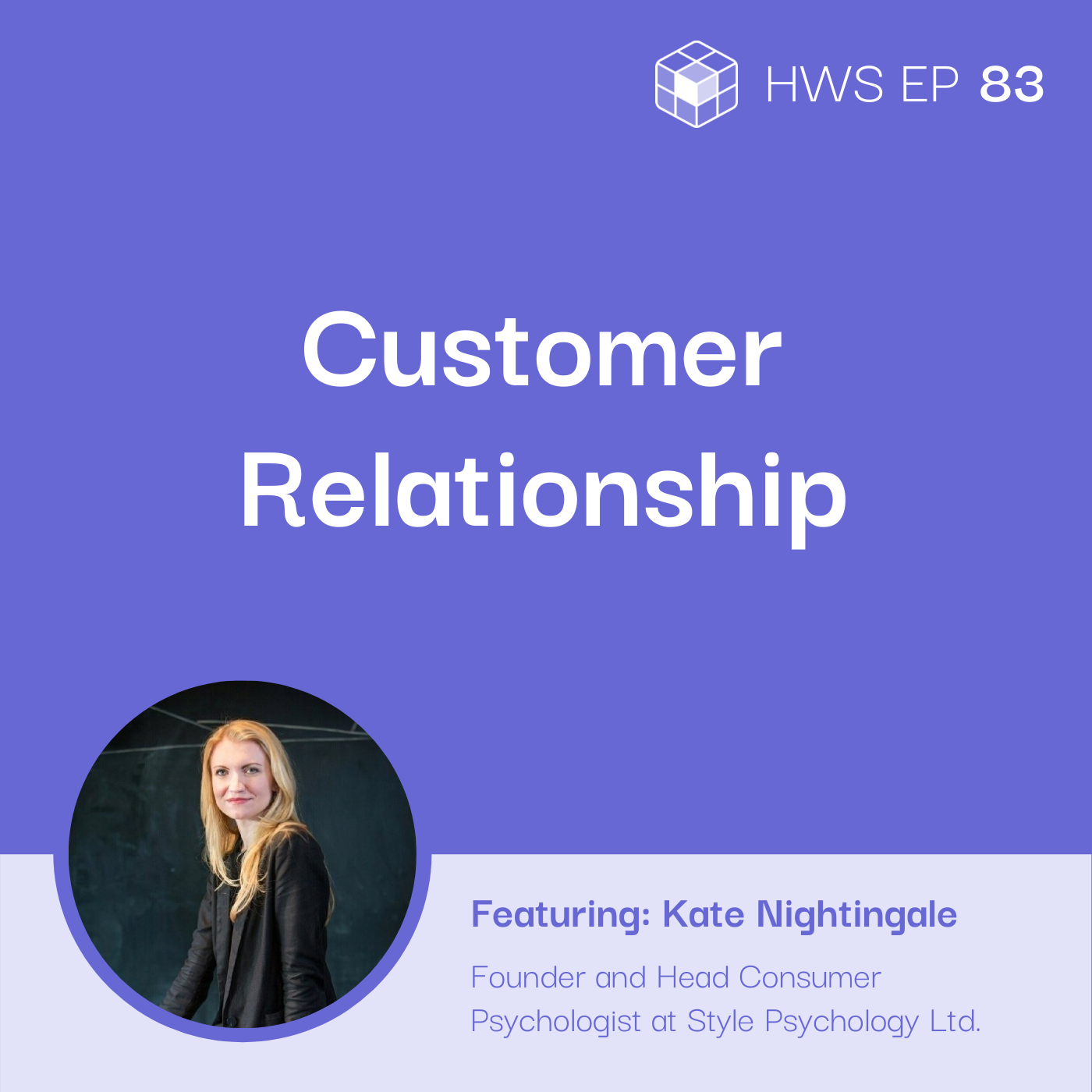Listen on:
Table of Contents:
Problem: How do brands create long-term customer relationships at scale?
Relationships are the ultimate foundation of who we are as human beings. Studies show that people think of brands as humans too. How do companies and brands create a long-term customer relationship, especially when you have to do it at scale as you cater to more customers?
Relationships are the ultimate foundation of who we are as human beings. We cannot survive without relationships. Whether those relationships are with individuals. Whether this is a relationship over an entire social group, culture, country. Whether that’s a relationship is between a singular customer and a brand.
Get to Know Your Customers Deeply
Relationships with your customers are not just about the purchase, it’s about getting to know them. Insight, commitment, intimacy, loyalty are the end results of a brand’s relationship with its loyal consumers.
Step #1: Treat Your Brand Like a Human
The logo and website are not the only things that make up a brand. According to psychological and neuroscientific studies, people perceive brands in the same way as humans. Brands that are able to create meaningful relationships with their customers are the most successful.
When we actually look into the science of how human beings perceive and build relationships with brands, they actually perceive them as human beings. And It’s both psychological and neuroscientific evidence that showcases that we actually do not differentiate between an entity of a brand and an entity of a human being. It’s exactly the same thing. Therefore, we do actually build more human-like relationships. It’s both psychological and neuroscientific evidence that showcases that we actually do not differentiate between an entity of a brand and an entity of a human being. It’s exactly the same thing. Therefore, we do actually build more human-like relationships.
Step #2: Make Sure Your Brand Behave Like a Person
When your customers see your brand as a person, they expect you to interact with them just like you do with your friends. Here are some ways you can engage them.
- Whenever you reply to them in comments or via messages, use everyday, conversational language.
- Give the brand a face and a name. Let your employees introduce themselves as representatives of your company.
- If your system uses chatbots, ensure they’re able to adapt to the brand’s voice and personality.
You respond to that much more conversational language, like a normal human being. You do not have to have scripted responses to things that feel cold and unapproachable.
Step #3: Get Intimate with Your Customers
Of course, in a clean, fun way! An intimate relationship with customers means knowing their likes, their personalities, and how they feel. You get to know your customers better by creating these personalized experiences. Kate shares tips on how to build a deep connection with them.
- Regularly respond to their comments and messages.
- Analyze their personalities and the things that affect their emotions.
- Personalize their experience based on what you learned.
- Allow them to see what goes on behind the scenes by letting them inside your team.
- Give them a chance to learn more about the brand.
You can plug in a lot of amazing software that allows you to really sort of analyze the customer’s personality and emotional state and continuously adjust your tone of voice within the framework of your brand personality and values. All those kinds of basic stuff that allow us to reach into the mind of the brand are something that naturally builds intimacy the same way. Like in any relationship you ask questions, you expect answers so you can understand who the person is. So you can understand what they value, and what is important to them.
Step #4: Set-up Processes to Make Sure You’re On the Same Page as Your Team
It’s crucial that you and your team are clear about how the brand should behave and act beginning with the moment you hire. Customer service representatives are an extension of your company and brand, just as everything else in your store is. When building your client-facing team, keep these in mind.
- Hire for culture fit, not skills.
- If the employee shares the same values and beliefs, everything else will follow.
- Empower your employees by letting them know what’s allowed and what’s not.
- Inform them of the limitations of their roles so they can make an informed decision.
Knowing what’s expected of them as brand representatives will enable them to handle customer concerns and problematic situations better, even without a script.
If you look at some of the most successful brands in the world, the first look at personality and values fit between the potential employee and the brand. And then only look at their experience because you can always teach people, but you can never teach them their personality because that’s already ingrained. If you are a little bit more trusting with your customer service team, give them guidelines of what is allowed. What’s not allowed. How much you can do or how much you can’t do. And once you give them enough agency and show them that you appreciate and trust them, they will inadvertently fall within the lines of your brand personality and your brand values.
Step #5: Pay Attention to the Smallest Details in Your Store
You can’t think of designing products and spaces as one-dimensional. It is impossible to design the retail space without considering the music, the lighting, the colors, and the sounds. It doesn’t work separately. Those personalized experiences require attention to even the tiniest detail.
There is absolutely nothing that your brands do that isn’t taken into account by the brain. Literally nothing whatsoever. Everything comes through us, to the brain because our subconscious brain picks up 11 million bits of information per second, and it processes it within that time. For example, sometimes brands are working on a design, then you have architects and designers, saying no, we are not going to touch music right now and we’re not gonna touch, or smell it until we finish the design. But, it doesn’t work like that because our world is naturally multi-sensory. So all of the senses are piggybacking on each other and changing its meaning, even things like placements and direction.
Step #6: Integrate Multi-sensory Experiences From Actual Storefront to Your Online Store
Kate emphasized the possibility of multisensory online experiences. When we imagine or remember sensory sensations, they are processed exactly the same way. It’s as if we’re experiencing them physically. The best way to influence those online experiences is through imagery and words. In order to accomplish that, you must be able to capture their deepest feelings and desires.
Majority of the things that we buy in our daily lives are things that we do not actually need. I mean, we truly need it for survival. We want them. We get pleasure from them. We want to express our identity. I need to belong. I need to feel important. I need to feel appreciated. I need to experience something. I need to be the best version of myself. I need to make an impact on the world and so on and so on. You need to kind of make sure that I’m having that promise, but I’m also having some of those other senses. So, I can get lost in that description because one of the most powerful aspects of the online experience is telepresence. So basically being transported into this external world that the brand created.
Step #7: Evaluate and Filter the Kind of Friction that Gets Integrated into the Experience
As you tie up all these experiences offline and online, ask yourself, “How much of myself should I actually extend to interact with that website?” And is that challenge good or bad? Friction is bad, but there are 2 kinds of friction, meaning less friction, and meaningful friction, as Kate explained through examples.
- Meaningless Friction- Customers having a hard time finding basic information like how to contact your team or ordering the product that he or she wants to buy.
- Meaningful Friction-Things that they enjoy even if it requires more effort from them like co-creation or taking extra steps in the buying process to factor in CSR initiatives from your brand.
Resources about business and culture, which Kate recommends:
Legacy by James Kerr
Why Kate Chose To Pursue Consumer Psychology
Although there was a lot of science being done around it and for me, that was always very surprising, that science hasn’t been used by the design team. And that’s really how I ended up on the route to becoming eventually consumer psychology. Teaching that as well as universities actually helping brands to use academic research, to make their customer experience their designs more effective, more engaging, and really just glazing a better world for human beings.
This interview is part of the How We Solve podcast. To hear more from industry experts who are solving everyday business problems, check us out on Spotify, Apple Podcasts, and on our website.
About the guest

Kate Nightingale
Kate Nightingale is a consumer psychologist, human brands expert, and founder of Style Psychology Ltd, a HUMAN experience consultancy with a twist. Their work takes on a new view on consumer business stemming from an old view of the human.
Listen on:
